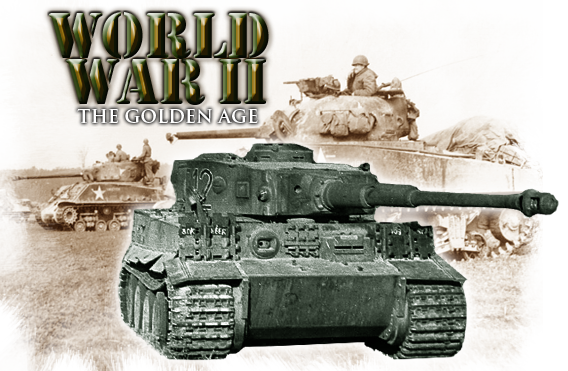
This was their finest hour. Never in history have so many tanks and AFV’s been built and fought all around the globe. From the snowy steppes of Russia to the soaky jungles of New Guinea, from the sands of Egypt to the grassy plains of Western Europe, the tanks were wherever soldiers were to be seen. They fought in most battles of the Second World War, some of these have become legendary like Kursk, one of the largest armoured clashes in the history of mankind. Some new tactics were developed during the interwar and refined, such as the “Blitzkrieg” which proved decisive and changed the way tanks would be used thereafter.
Nations
Asia
Europe
 Belgium
Belgium
 Bulgaria
Bulgaria
 Croatia
Croatia
 Czechoslovakia
Czechoslovakia
 Denmark
Denmark
 Finland
Finland
 France
France
 Germany
Germany
 Greece
Greece
 Hungary
Hungary
 Ireland
Ireland
 Italy
Italy
 Italian Partisans
Italian Partisans
 Italian Social Republic
Italian Social Republic
 Latvia
Latvia
 Lithuania
Lithuania
 Netherlands
Netherlands
 Norway
Norway
 Poland
Poland
 Romania
Romania
 Slovenia
Slovenia
 Soviet Union
Soviet Union
 Spain, Kingdom of
Spain, Kingdom of
 Spain, Nationalist
Spain, Nationalist
 Spain, Republican
Spain, Republican
 Sweden
Sweden
 Switzerland
Switzerland
 United Kingdom
United Kingdom
 Yugoslavia
Yugoslavia
 Yugoslav Partisans
Yugoslav Partisans
Middle East
 Hatay (fictional)
Hatay (fictional)
 Mandatory Palestine
Mandatory Palestine
North America
 Canada
Canada
 El Salvador
El Salvador
 United States of America
United States of America
Oceania
South America
WWII Illustrations without a nation page
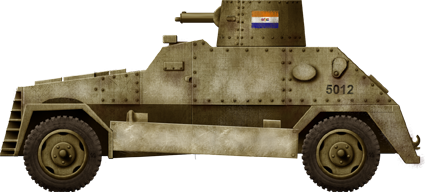
Marmon-Herrington Mk.II (1941)

Marmon-Herrington Mk.II of the British series (“Middle East” model) with maximal armament, comprising a Boys AT rifle, a coaxial Bren and two pintle mounts with a rear Vickers and a front extra Bren (which was rarely seen).
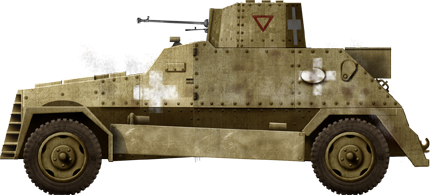
Marmon-Herrington Mk.II captured by Axis forces, XXIst Panzerdivision, Tobruk, June 1942.
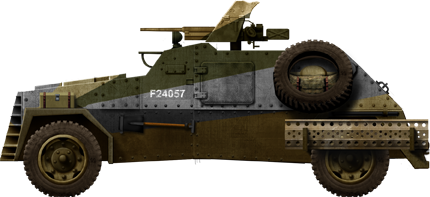
Marmon-Herrington Mk.II with a captured German PaK 36, El Alamein, November 1942. Notice also the extra rear door, a Mk.III feature.
Marmon-Herrington Mk.III (1942)
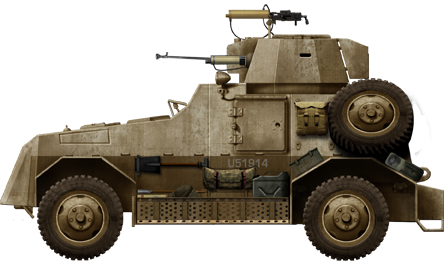
Marmon-Herrington Mk.III of the South African UDF, Eritrea, Eastern Africa, summer 1941.
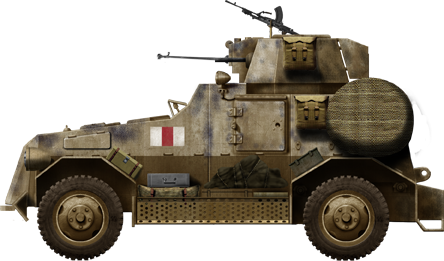
British Mk.III, VIIIth army, Libya, early 1942.
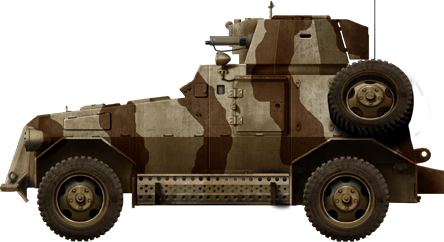
Captured Japanese Mk.III (formerly operated by the KNIL, 1st Independent recon squadron) manned by Indonesian nationalist POWs in 1942.
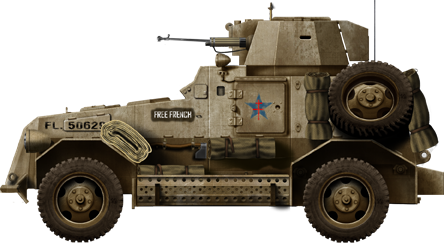
Free French Marmon-Herrington Mk.III, Central Africa, summer 1941.
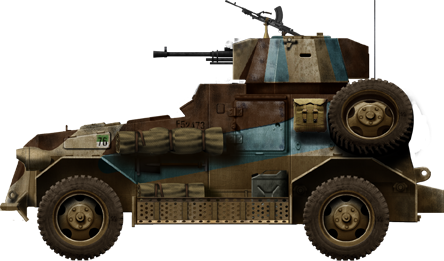
British Marmon-Herrington Mk.IIIa MFF, Libya, fall 1942.
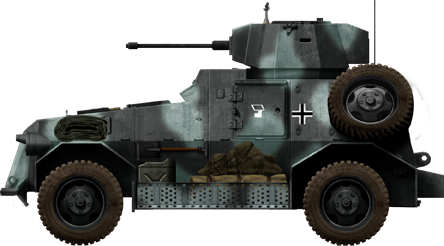
Marmon Herrington Mk.IIIa (Flak 38) captured by the Axis, Greece, fall 1941.
Marmon-Herrington Mk.IV (1942)
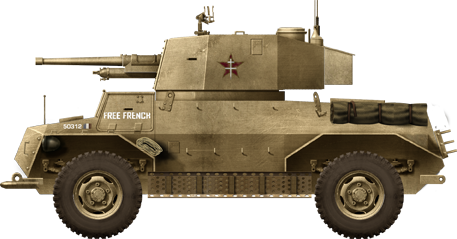
Free French Forces Mark IV in Italy, 1944 (now at the Saumur tank museum).
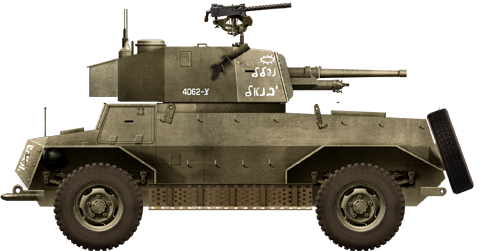
Israeli Mk.IVF “Terrible Tiger”, now displayed at the Latrun tank museum.
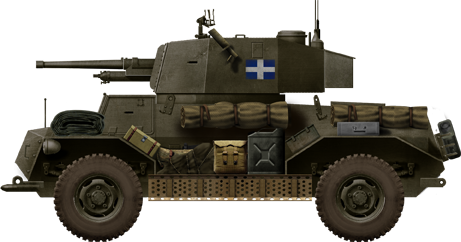
Postwar Greek Mk.IVF.
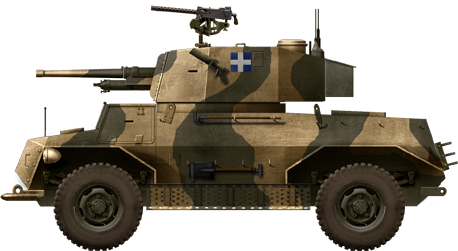
Camouflaged Greek Mk.IVF in the 1970s.
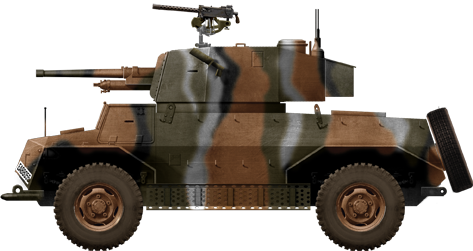
Greek Mk.IVF, Aegean islands, 1990.
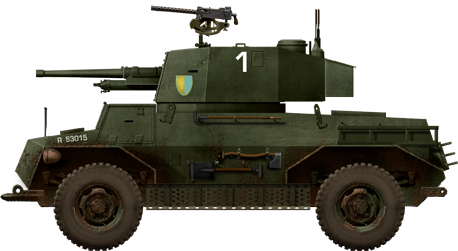
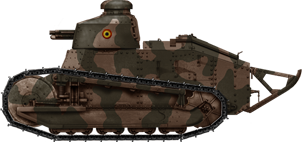
Belgian Renault FT. 75 were still held in reserve in early 1939, and replacements were on their way in the form of the ACG-1 medium tanks. This illustration is based on the Brussels army model on display at the Royal Museum of the Armed Forces in Brussels.
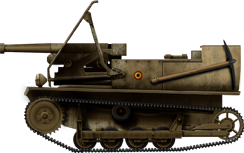
SA FRC 47 mm (1.45 in) mounted on a Carden-Loyd Mk.VI tankette. This early experiment was unsuccessful, as the hull was too light to cope with the muzzle blast and recoil of the gun. Only six were so converted. They were passed, in 1938, from the Chasseurs Ardennais to the Cycliste Frontiere regiment, and placed in fixed ambushing positions between Vivegnis and Lixhe (Meuse river western banks), firing some rounds on the Germans on 10-11 May 1940.
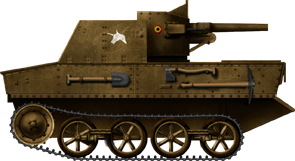
Vickers T13 Type 1, first version of this prolific tank-hunter (32 units delivered). The gun was partially protected, and could be fully traversed only when the driver compartment armored panels were folded. Unknown unit (unicorn), Cyclist Frontiere unit, central plains near Liege, May 1940.
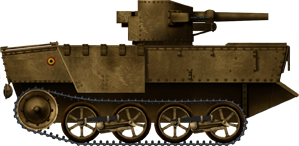
Vickers T13 Type 2, 3rd Lanciers (1DC), May 1940. The panels were folded, which left the crew unprotected, but the gun had full traverse. Only 21 Type 2s were produced (23 from other sources).
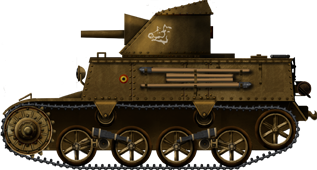
T13 Type 3 of the elite Chasseurs Ardennais with the famous Ardennes wild boar insignia, Albert Canal, 10-12 May 1940. Over 255 units seem to have been delivered until May 1940, but far fewer were actually serviceable in time.
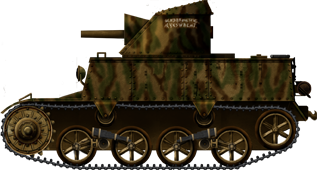
Beutepanzerkampfwagen T13(b) of the German feldgendamerie. The camouflaged livery is as seen from a photo probably taken in 1943 (photographer unknown)
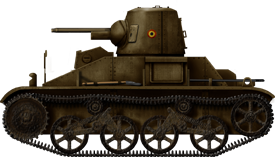
T15, presumably of the 2nd Lanciers, Gembloux area, May 1940, courtesy of Georges Coninckx.
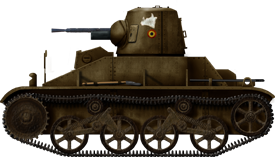
T15 of the Chasseurs Ardennais, recognizable by their Ardennes wild boar emblem. The gun had no protective mantlet.

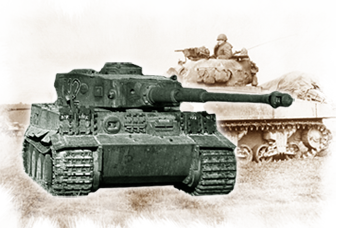

 China
China Japan
Japan Thailand/Siam
Thailand/Siam Australia
Australia New Zealand
New Zealand Argentina
Argentina Bolivia
Bolivia Chile
Chile Peru
Peru
60 replies on “World War Two Tanks”
Very well written, it’s been joy to read thus far. To condense such a diverse and complicated history that is armored warfare into this easy to read and understand format is quite the technical coup. I found your site after building the MENG 1/35 Mk A Whippet tank and wanted to learn more. Now I’m keen on building all the WWI tanks that are kitted in plastic!
First, thank you Mark ! In the name of the team, we hope to live up to your expectations
Well, there is a market for WW1 armoured cars as well ! Many ideas for rarely made models and no or a very few companies made them. That’s where we come along…
What are some quality World War II websites?
I have gone on many sites ,but here’s what I found. Some of these are not World War 2 specific to be honest. Achtungpanzer.com is one of my sources for armour research. Militaryfactory.com cotains lists of World War Two weapons like this list of weapo…
Excellent site. I really enjoy the artwork. Thank you for this incredible endeavor that you have undertaken.
yes
-Eric
good site! I hope they will add the T 29 heavy tank into the USA category.
An illustration of it will probably be added sooner or later.
I wonder if they will add the T-34. Just “The T-34” because it was very mighty.
https://www.tanks-encyclopedia.com/ww2/soviet/soviet_T34-76.php
https://www.tanks-encyclopedia.com/ww2/soviet/soviet_T34-85.php
No, no, no. I meant the regular T-34. But where did the t-62 go?
Matt, those are the two main versions of the regular T-34. Those are it. Not much else save the “tank destroyer-ish” T-34/57.
As for the T-62, it is on the Cold War page.
I think Matt is referring to the American prototype made famous by World of Tanks, the T34.
If you think the American prototype “t-34” it was pretty good, but the t34/76 or 85 was only good because it was mass produced in large numbers, not because of its gun, Armor and, reliably.
Introduced sloped armor. Good balance of firepower, mobility, and protection.
The Mark I from World War One had sloped armor, at least on the bottom of the front.
I’m interested in purchasing WWII tank posters,how much are they and how do I order them?
many tanks were invented in ww2 and I like tiger king tier j tiger and Maus and E100. these tanks were deadly.
But fuel thirsty.
that is a cool tank
The E100 was only an unfinished prototype. It could never be really considered deadly. Like its overweight brother the Maus, it never saw combat either. The only one that could be considered a force to be reckoned with is the King Tiger, which frightened any Allied tanker. Although, if they were fielded they would have been a nightmare to deal with.
We absolutely love your blog and find many of your post’s to be precisely what I’m looking for.
Does one offer guest writers to write content for you
personally? I wouldn’t mind writing a post or elaborating
on some of the subjects you write about here.
Again, awesome blog!
You might want to check out the tanks under the Nazi Germany tabs, lots of tanks aren’t german…
like 95% of them
Explain please?
– TE Moderator
is this information copyrighted?
Short response, yes.
All depends how to use these infos
i’m doing a essay and wondering if i can copy and past info for it.
Hello Nick,
Since it remains only for education purposes and with due credits…
Better to contact however the respective authors first
Good luck
Thanks for doing this, really enjoy reading it
Hello EmeraldBrix here
Just wondering could you do an article on the Grille XV as I would enjoy reading about its history. Also I would like to know how many prototypes were built and if any survive. ?
EmeraldBrix out
If you refer to the WoT Grille 15, then it is an extremely dubious vehicle and there is little, if any, real evidence of it. It may be covered in a Fake Tanks article in the future.
– TE Moderator
Thanks,
I was referring to the grille XV. But maybe a grille series article could be considered? There was a real grille (also referred to as the bison)
Cheers
EmeraldBrix
Thanks guys for doing the grille panther article. A great read, and some good facts there too.
Cheers
EmeraldBrix out~
I can’t wait for this to be finished. I was doing a presentation about WW2 tanks for school history class and I found this to be very helpful. Thank you and keep up the good work!
Hello.
I’ve written you a couple years ago about using several pictures of yours in my non-commercial color pictures mod for WinSPWW2 game (http://forum.shrapnelgames.com/forumdisplay.php?f=139 ), since your page is the only wonderful source of some less-popular vehicles 🙂 I see from Japanese poster, that you have a picture of Type 98 Ta-Se SPAAGun, but there is no article. Could you possibly send me this picture, so I can make my mod complete? (there remained literally several vehicles lacking).
Regards
Michal
In the Vickers 6 ton sections you wrote: (the Axis, supporting the Republicans, only had tankettes then).
I think that you want to say Supporting the Nationals nor the republicans.
I can’t get to the news section properly at the moment. It takes me to a page with irrelevant news stories when I want to see this site’s news – it used to show all the previous and new stories with them in a list view two abreast.
Hello Vanders,
Unfortunately, we haven’t fully recovered from the hack from last week and we are having some problems with certain features.
We are working on it.
Oh, I wasn’t aware the site was hacked. Hackers are scum. Hopefully things can be righted soon. o7
Had any luck restoring full functionality? I’d really like to view a list of the latest articles again.
Hello Vanders, i understand your frustration, but following our last two hack and without a precise path of attack clue we “reduced the attack surface” by deactivating all plugins. We are reactivating them now one by one gradually (about 60% of the total now). The carousel in next on the list but it will be discarded again if not 100% security proofed by the author (3 unsolved issues). Coming soon anyway, perhaps with a tailor made carousel…
Cheers,
David B, the webmaster
Thanks for the update David. I’d actually not noticed the automatically scrolling latest articles at the top so that is sufficient for me until functionality is returned.
Good luck again.
I’m curious why Germany is listed as “Nazi Germany” under countries. Japan isn’t listed as “Imperial Japan” and Italy isn’t listed as “Fascist Italy” I’m wondering why Germany is singled out.
Why are some of the articles and pictures gone? And more important…are they coming back?
On your side view pic of Lt Bob Boscawen’s Sherman V Tulip, it carries the serial number T47785. What was the source for this number? I’m building a 1/35 model of this particular tank, and would like it to be as accurate as possible.
Cheers,
Chris
You check out the”GHQ” models, they have the best details you could find in a very small size.
Hey well done, great coverage on the different fronts. How far along are you on finishing the rest of the eastern front articles? If you guys need any help editing, writing, or proofreading let me know! I’d love to contribute!
We are always looking for writers. Send us an email or join us on Discord.
I think the Sherman had an superb design, because it was also design to go onto these trains that ship them into war, also it was highly reliable.
not true the sherman was a excellent desighn yes but, it lacked in space for the turret crew and a good horizontall drive thus causeing the turret to turn slowly.
It was good when it was designed, but took to long to be put into service and was weak by the time it reached the frontlines.
sure the Sherman was an excellent tank but it lacked the features of space in the turret for the crew to move freely to perform at peak efficiency.
Have you ever thought breaking down some of the individual technologies that make up an armored vehicle and covering their evolution from WW1 up until the current time? Or at least as current as info is available for. For example you could start with suspension: the earliest tanks had none that I am aware of, then progress to leaf springs, coil springs, rubber block and some of the more common ways that these were incorporated. The torsion bar and whatever is currently used. Optics, or more generally, the crews view from the tank, could be another interesting one. Personally, I have not found much info on tank optics on the internet, and some of what I have found I don’t understand. You could do the same for armor, armament, tracks, etc.
I’ve been seeing models of a “sturmelefant” floating around, it is most definitely fake but could make a good April fools article.
They should add the T32 heavy tank into the WWll USA category
Who wrote this?
Many authors.
pls add m3 halftrack and all other variants!
thanks
I was watching The World at War. A British tanker was remembering happy experiences during World War Two. In the discussion, he referred to the “panier” door of the tank. Where is that? Is it a side door? He did not say which tank they were using.
One of the best blogs ever. However- I am obsessed w/ inter-war weaponry and I can find no easy way to navigate to a discussion of the Vickers 6 tonne, A1E1 Independent, and most especially – the development of doctrine and tactics! Please consider an Inter-War section.